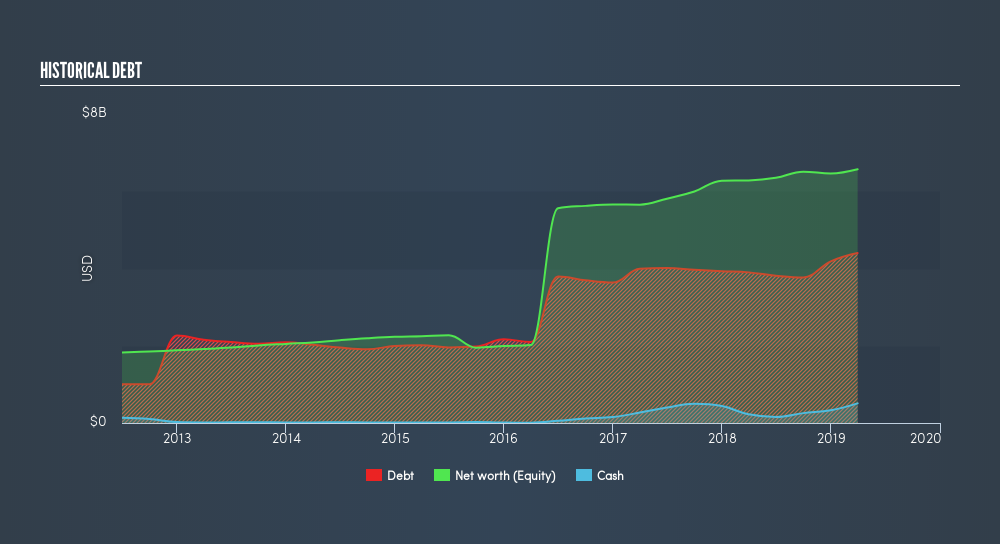- United States
- /
- Commercial Services
- /
- NYSE:WCN
What You Must Know About Waste Connections, Inc.'s (NYSE:WCN) Financial Strength

Want to participate in a short research study? Help shape the future of investing tools and you could win a $250 gift card!
Waste Connections, Inc. (NYSE:WCN), a large-cap worth US$24b, comes to mind for investors seeking a strong and reliable stock investment. Big corporations are much sought after by risk-averse investors who find diversified revenue streams and strong capital returns attractive. However, its financial health remains the key to continued success. Let’s take a look at Waste Connections’s leverage and assess its financial strength to get an idea of their ability to fund strategic acquisitions and grow through cyclical pressures. Note that this information is centred entirely on financial health and is a high-level overview, so I encourage you to look further into WCN here.
View our latest analysis for Waste Connections
WCN’s Debt (And Cash Flows)
WCN's debt levels surged from US$3.9b to US$4.4b over the last 12 months , which includes long-term debt. With this increase in debt, WCN currently has US$508m remaining in cash and short-term investments to keep the business going. Additionally, WCN has generated US$1.5b in operating cash flow during the same period of time, leading to an operating cash to total debt ratio of 33%, signalling that WCN’s operating cash is sufficient to cover its debt.
Can WCN pay its short-term liabilities?
At the current liabilities level of US$844m, the company has been able to meet these commitments with a current assets level of US$1.2b, leading to a 1.47x current account ratio. The current ratio is the number you get when you divide current assets by current liabilities. For Commercial Services companies, this ratio is within a sensible range since there's a sufficient cash cushion without leaving too much capital idle or in low-earning investments.

Can WCN service its debt comfortably?
With a debt-to-equity ratio of 67%, WCN can be considered as an above-average leveraged company. This isn’t surprising for large-caps, as equity can often be more expensive to issue than debt, plus interest payments are tax deductible. Since large-caps are seen as safer than their smaller constituents, they tend to enjoy lower cost of capital. We can test if WCN’s debt levels are sustainable by measuring interest payments against earnings of a company. A company generating earnings before interest and tax (EBIT) at least three times its net interest payments is considered financially sound. In WCN's case, the ratio of 6.88x suggests that interest is appropriately covered. It is considered a responsible and reassuring practice to maintain high interest coverage, which makes WCN and other large-cap investments thought to be safe.
Next Steps:
WCN’s high cash coverage means that, although its debt levels are high, the company is able to utilise its borrowings efficiently in order to generate cash flow. Since there is also no concerns around WCN's liquidity needs, this may be its optimal capital structure for the time being. Keep in mind I haven't considered other factors such as how WCN has been performing in the past. I suggest you continue to research Waste Connections to get a more holistic view of the large-cap by looking at:
- Future Outlook: What are well-informed industry analysts predicting for WCN’s future growth? Take a look at our free research report of analyst consensus for WCN’s outlook.
- Valuation: What is WCN worth today? Is the stock undervalued, even when its growth outlook is factored into its intrinsic value? The intrinsic value infographic in our free research report helps visualize whether WCN is currently mispriced by the market.
- Other High-Performing Stocks: Are there other stocks that provide better prospects with proven track records? Explore our free list of these great stocks here.
We aim to bring you long-term focused research analysis driven by fundamental data. Note that our analysis may not factor in the latest price-sensitive company announcements or qualitative material.
If you spot an error that warrants correction, please contact the editor at editorial-team@simplywallst.com. This article by Simply Wall St is general in nature. It does not constitute a recommendation to buy or sell any stock, and does not take account of your objectives, or your financial situation. Simply Wall St has no position in the stocks mentioned. Thank you for reading.
About NYSE:WCN
Waste Connections
Provides non-hazardous waste collection, transfer, disposal, and resource recovery services in the United States and Canada.
Moderate growth potential with questionable track record.
Similar Companies
Market Insights
Community Narratives



